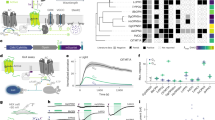Abstract
Two distinctive features of “imprinting” originally emphasized by Lorenz1 were that there was a critical period in which the preference for a particular species was established and that the preference established during this period was permanent and could not be changed by subsequent experience. These two features have been reiterated by Hess2, who has added a primacy-recency feature, claiming that the first imprinting experience has priority over a subsequent one. These features of imprinting have been questioned by Sluckin and Salzen3, who treated imprinting as a perceptual learning phenomenon in which the sensitive period is experience dependent and the stability of an imprinted preference is dependent on the amount of experience. More recent reviews by Sluckin3 and Bateson3 have supported this view. In particular the perceptual learning view of imprinting has been developed into a neuronal model hypothesis of imprinting by Salzen4 and it predicts that object preferences established by the imprinting process should be subject to reversal given sufficient exclusive and enforced experience of new objects after the end of the so-called critical period. The present experiment demonstrates a reversal of this kind.
This is a preview of subscription content, access via your institution
Access options
Subscribe to this journal
Receive 51 print issues and online access
$199.00 per year
only $3.90 per issue
Buy this article
- Purchase on Springer Link
- Instant access to full article PDF
Prices may be subject to local taxes which are calculated during checkout
Similar content being viewed by others
References
Lorenz, K. Z., Auk, 54, 245 (1937).
Hess, E. H., Science, 130, 133 (1959).
Sluckin, W., and Salzen, E. A., Quart. J. Exp. Psychol., 13, 65 (1961). Sluckin, W., Imprinting and Early Learning (Methuen, London, 1964). Bateson, P. P. G., Biol. Rev., 41, 177 (1966).
Salzen, E. A., Symp. Zool. Soc. Lond., 8, 199 (1962).
Hess, E. H., J. Comp. Physiol. Psychol., 52, 515 (1959).
Kaye, S. M., Psychonom. Sci., 3, 271 (1965).
Steven, D. M., Brit. J. Anim. Behav., 3, 14 (1955).
Schein, M. W., Zeit. Tierpsychol., 20, 462 (1963).
Cairns, R. B., and Johnson, D. L., Psychonom. Sci., 2, 337 (1965).
Author information
Authors and Affiliations
Rights and permissions
About this article
Cite this article
SALZEN, E., MEYER, C. Imprinting: Reversal of a Preference established during the Critical Period. Nature 215, 785–786 (1967). https://doi.org/10.1038/215785a0
Received:
Revised:
Published:
Issue Date:
DOI: https://doi.org/10.1038/215785a0
This article is cited by
-
The effects of social rearing on preferences formed during filial imprinting and their neural correlates
Experimental Brain Research (2011)
-
Imprinting in Guinea-pigs
Nature (1968)
Comments
By submitting a comment you agree to abide by our Terms and Community Guidelines. If you find something abusive or that does not comply with our terms or guidelines please flag it as inappropriate.



